We were asked by the community to look at the uptake of BGP Large Communities as observed by our Routing Information Service (RIS).
Mid last year we provided some trends on the uptake of BGP Large Communities. Example uses of BGP Large Communities are provided in RFC8195.
BGP Large Communities are a novel way to signal information between networks. Large BGP Communities are easy to use, implement and deploy. An example of Large Communities is: 2914:65400:38016. Large BGP Communities are composed of three 4-byte integers, separated by a colon. This is easy to remember and accommodates advanced routing policies in relation to 4-Byte ASNs. (source: BGP Large Communities)
The first of the three integers is the so called global administrator ('ga'), which is the ASN (gaASN) that defines the intended use of the other two integers. So in the example above the operator of AS2914 defines the meaning of2914:65400:38016 (and any other BGP Large Communities starting with 2914: ). An operator typically shares the values to use publicly or restricts distribution of that info, for instance to directly connected networks.
We are getting close to 20,000 4-byte Autonomous System Numbers (ASNs) seen in the global Internet routing system, and at this point the Regional Internet Registries (RIRs) mostly assign 4-byte ASNs. Whereas 2-byte ASNs can easily use the old style BGP Communities, for 4-byte ASNs this is pretty hard if not impossible without dire consequences. But with the introduction of BGP Large Communities, one big hurdle for using of 4-byte ASNs is gone.
Figure 1 shows how many distinct large community values were seen in RIS at the first of every month. Since we last reported on this, we have seen a steep increase in the use of BGP Large Communities (note that RIS route collectors (RRCs) 19, 20, and 21 monitor the use of BGP Large Communities for some years now. All other RRCs started counting early 2018).
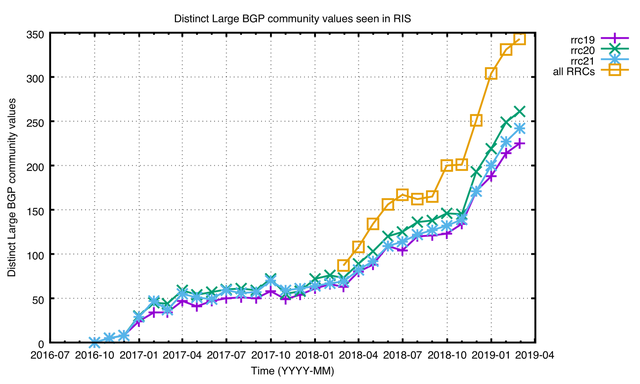
Figure 1: Distinct large BGP community values seen in RIS over time
Figure 2 shows how many gaASNs were seen in RIS. Again we can observe a steep increase, with over 100 gaASNs seen in March.
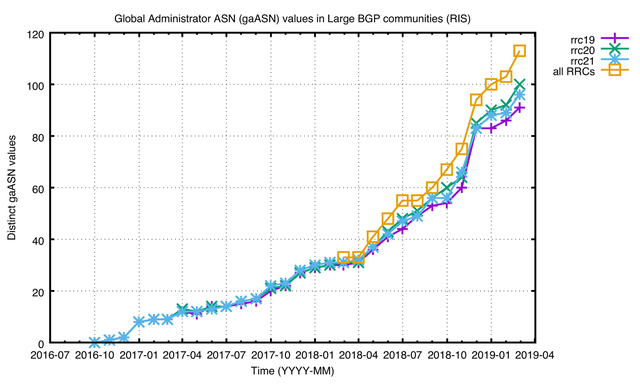
Figure 2: Distinct gaASNs seen in RIS over time
Different Types of BGP Large Communities
As in our earlier analysis, we try to distinguish 3 types of large community use:
- Use by the originator of the route (Figure 3)
- Use by ASNs in the path (Figure 4)
- Other (invisible in AS path, like IXP route server, or config error) (Figure 5)
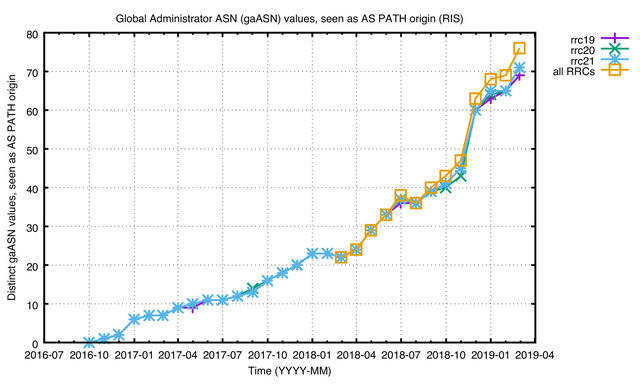
Figure 3: Distinct gaASNs seen as route originator in RIS over time
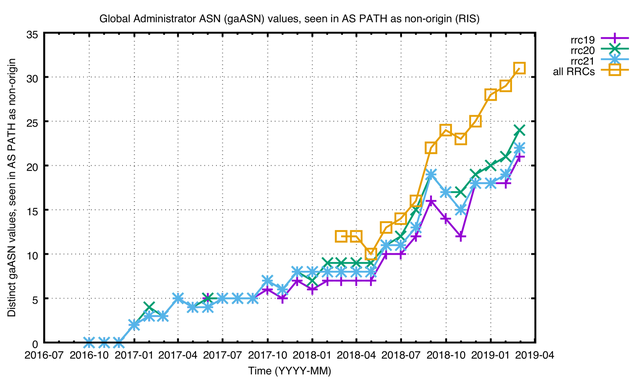
Figure 4: Distinct gaASNs as non-origin in RIS over time
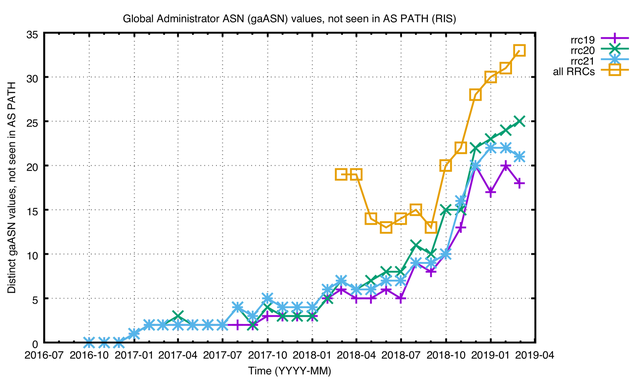
Figure 5: Distinct gaASNs not in the AS path over time
As can be seen in Figures 3, 4, and 5, the use of large communities in these categories has made quite a jump since we last reported on this.
Further analysis shows that for those gaASNs that are not in the AS path, 21 out of 33 are related to IXPs. This makes sense for typical IXP configurations where route-servers strip the route-server ASN from their path.
Conclusion
BGP Large Communities fill a very small yet critical role in the Internet interconnect ecosystem. While 100 networks out of a pool of 20,000 might not seem like a lot, the fact that the use of this technology is increasing steeply makes me think that it has gotten over the acceptance bump that can often block new technologies.
Our measurements show that the use of BGP Large Communities has been increasing significantly and is definitely far beyond the "early adopter" stage. This takes away a hurdle for the usage of 4-byte ASNs.

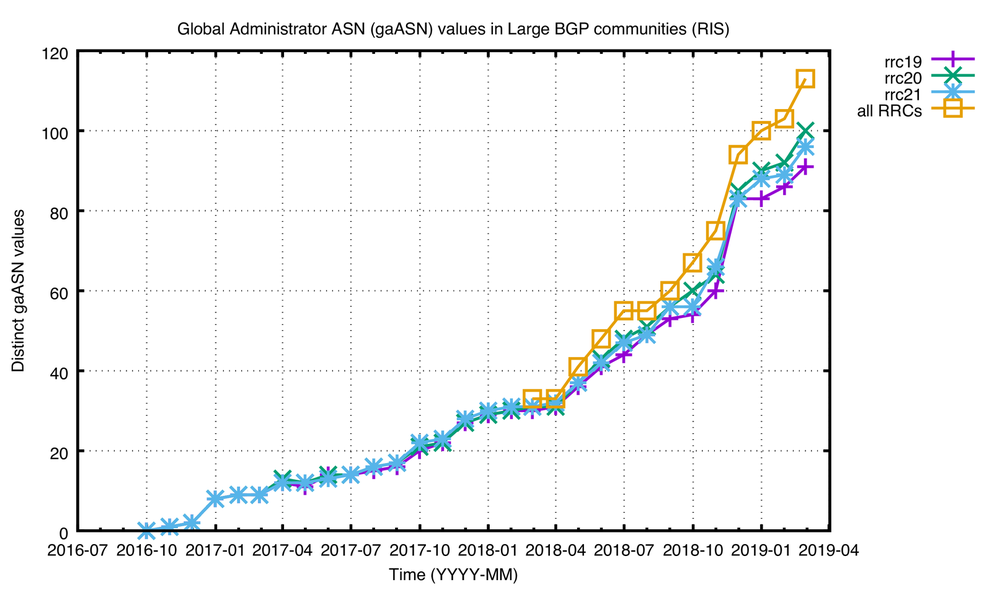

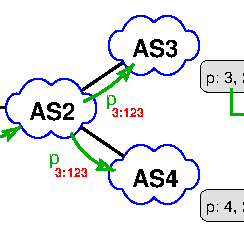

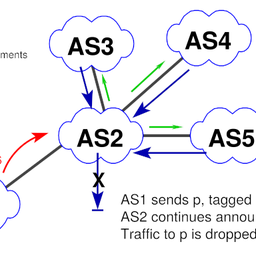



Comments 0
The comments section is closed for articles published more than a year ago. If you'd like to inform us of any issues, please contact us.